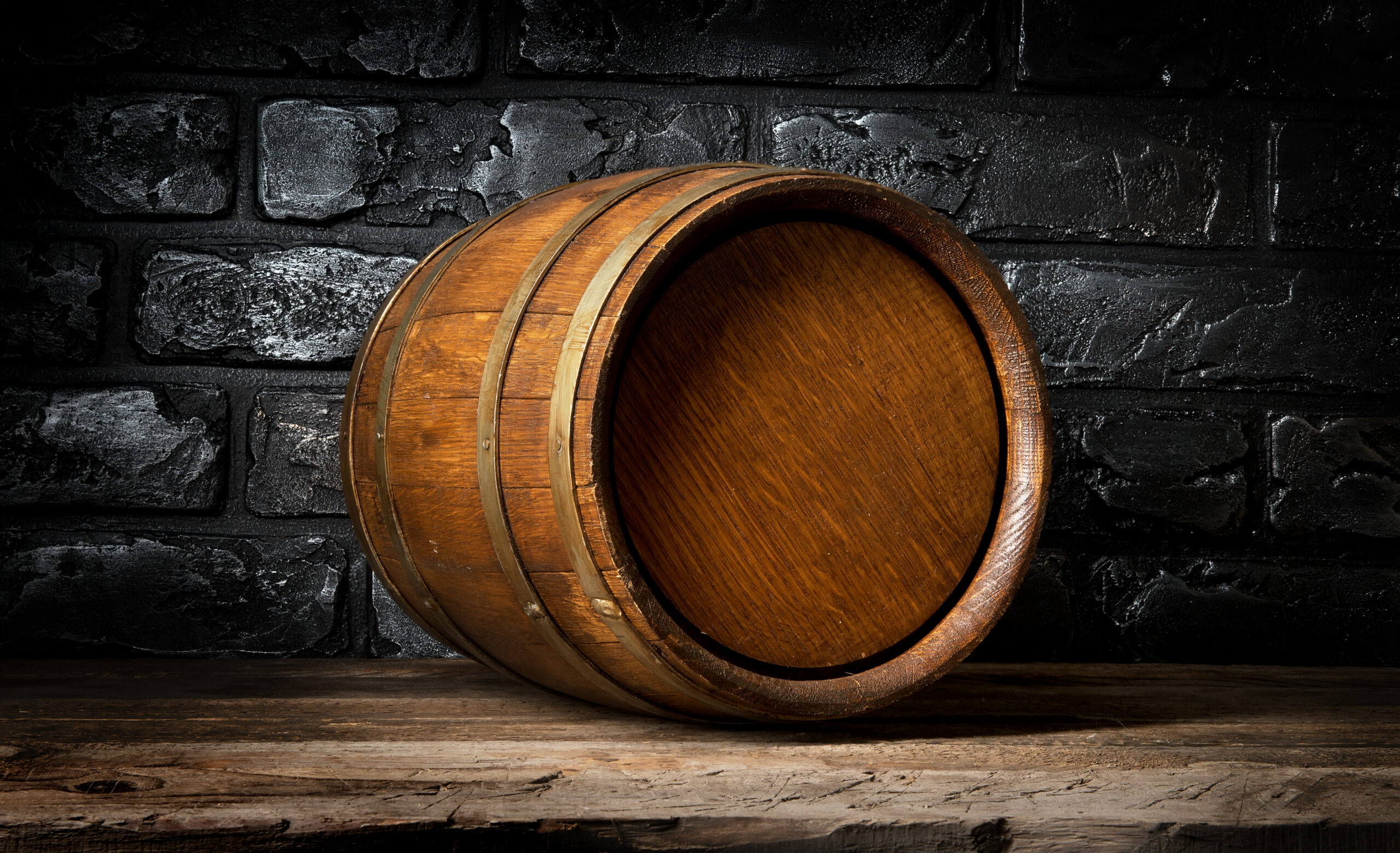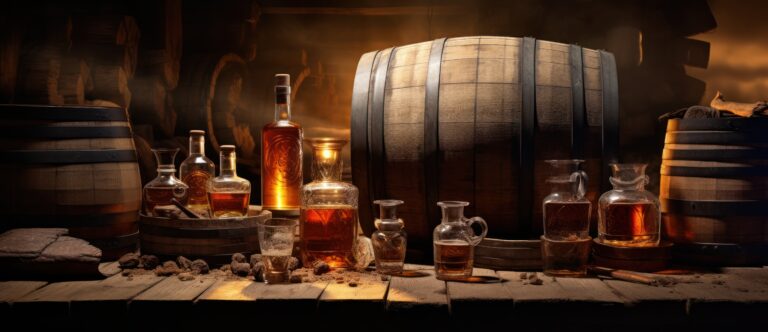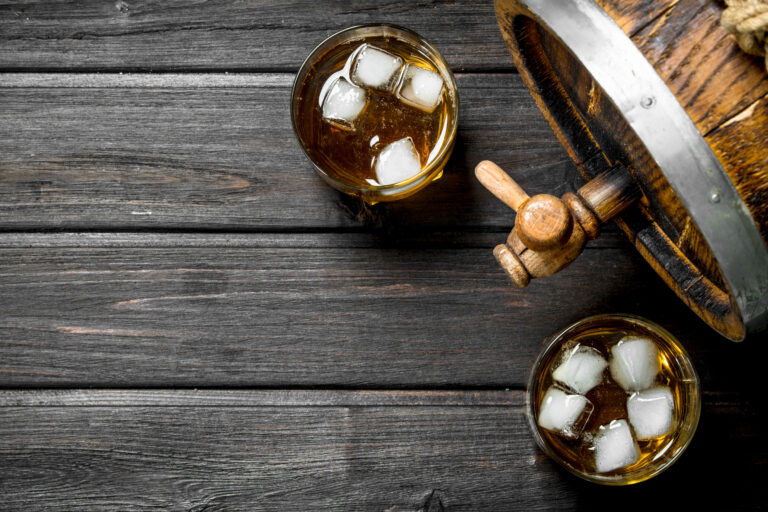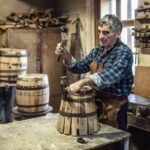Have you ever wondered how those massive oak barrels are made to age fine whiskeys and wines? As a whiskey enthusiast, you’ve probably noticed the range of barrel sizes used by different distilleries and brands. The size of the barrel plays an important role in determining the flavor, color, and aroma of the aged spirit. The most common size used in whiskey aging is the standard barrel, which holds approximately 53 gallons of liquid. But some distilleries also use smaller quarter casks and larger hogsheads for aging certain expressions. In this quick guide, we’ll walk through the typical dimensions and capacities of whiskey barrels so you can impress your friends with this knowledge next time you’re enjoying a dram.
Introduction to Whiskey Barrels
Whiskey barrels come in all shapes and sizes, but the most common are the charred oak barrels used for aging bourbon and other whiskies. These barrels typically have a diameter of around 32 to 36 inches and a height of 54 inches.
The diameter, or width, of the barrel determines how much liquid it can hold. Most whiskey barrels have a capacity of 53 to 59 gallons. The barrel’s shape and size also impact how the whiskey ages and develops flavor. More surface area means more interaction between the whiskey and the charred oak, which results in faster aging and a darker, smokier flavor.
Over time, as the whiskey interacts with the oak, the barrel expands slightly. This is known as “breathing” and allows the flavors to develop further. The expansion also causes some of the whiskey to evaporate, which is known as the “angel’s share”. This loss of volume further concentrates the flavor and aroma compounds in the remaining whiskey.
The specific oak, level of char, and aging conditions also play a role in the whiskey’s development of color and taste. But in the end, the humble whiskey barrel, with its characteristic shape and size, is instrumental in creating the complex flavors we know and love in aged bourbon and other fine whiskies.
Standard Sizes for Whiskey Barrels
When it comes to whiskey barrels, size matters. The most common sizes are the standard 53-gallon and 27-gallon barrels.
The 53-gallon barrel, also known as the “bourbon barrel”, is the most popular size used for aging bourbon and other whiskeys. These barrels are approximately 24 inches in diameter and 36 inches tall. Whiskeys aged in smaller barrels tend to mature faster, so the 53-gallon size is ideal for achieving the perfect balance of flavor, aroma, and color.
For a smaller batch, many distillers use 27-gallon barrels. Measuring 22 inches wide and 31.5 inches high, these “quarter casks” age whiskey faster due to the increased surface area to volume ratio. The wood imparts its flavor much quicker, resulting in a whiskey with robust oak notes in less time.
Whether you prefer a smooth, mellow whiskey or a bolder flavor, there’s a barrel size that’s just right. At the end of the day, you can’t go wrong with a classic 53-gallon or 27-gallon barrel. Both produce whiskeys with rich character that are sure to please.
Measuring the Diameter of a Whiskey Barrel
The diameter of a whiskey barrel refers to the width of the barrel, measured across the widest part in the middle. To measure the diameter, you’ll need a tape measure.
Measuring the Barrel
Stand the barrel upright on its bottom rim. Wrap the tape measure around the barrel at its widest point in the middle. Make sure the tape is level as you wrap it around.
Where the tape meets back up with itself, that is the diameter measurement in inches. The typical whiskey barrel used in aging bourbon and scotch is around 31 to 33 inches in diameter. Some smaller craft distillers may use barrels as small as 15 gallons (around 23 inches) up to the standard 53 gallon (33 inches).
The diameter, along with the barrel’s height, determines its volume and how much whiskey it can hold. A larger diameter barrel will produce whiskey with more contact between the spirit and the oak, which can impact color and flavor. The diameter measurement is important for distillers to know to calculate how long to age the whiskey to achieve the desired flavor profile.
For enthusiasts, knowing the barrel diameter can give you an indication of what style of whiskey it may have aged and how the oak barrel may have influenced the final product. Both the size and type of barrel play a key role in giving aged spirits their characteristic color, aroma, and taste.
How Barrel Size Impacts Whiskey Aging
The size of a whiskey barrel directly impacts how the spirit ages and develops flavor. Standard barrel sizes are typically 53 gallons for bourbon and Scotch whisky.
Surface Area
The smaller the barrel, the greater the surface area to volume ratio. This means more of the whiskey is exposed to the wood, allowing it to absorb more flavors and aromas in a shorter time. Smaller barrels, like 5 to 10 gallons, produce a whiskey with an intensely woody character in just 6 to 12 months.
Oxygen Exposure
More surface area also means more exposure to oxygen. Oxygen causes chemical reactions in the barrel that change the whiskey’s color and flavor. The smaller the barrel, the faster these reactions occur due to increased oxidation.
Evaporation
With more surface area exposed, small barrels experience greater evaporation during aging. This is known as the “angel’s share” and results in a loss of volume. However, it also concentrates the remaining flavors and aromas, leading to a more intense spirit. In a year, a typical 53-gallon barrel may lose 5% to 10% of its volume, while a 5-gallon barrel can lose 25% or more.
While full-sized barrels are ideal for producing well-rounded, balanced whiskeys suitable for mass markets, smaller barrels allow craft distillers to create distinctive, full-flavored spirits in less time. By understanding how barrel size impacts aging, you can choose a whiskey tailored to your specific tastes.
Factors That Influence Barrel Diameter
The diameter of a whiskey barrel depends on several factors.
Wood Type
The type of wood used, like American white oak, influences diameter. Oak is porous, allowing whiskey to penetrate the wood and absorb flavors. Wider oak staves provide more surface area for whiskey to interact with the wood.
Barrel Size
Barrel size, ranging from small 5-gallon barrels to large 60-gallon barrels, directly impacts diameter. Smaller barrels have a smaller diameter, while larger barrels need a wider diameter to contain more liquid.
Maturation Time
The length of time whiskey ages in the barrel, known as maturation, also affects diameter. Whiskey evaporates in the barrel over time through a process called the ‘angel’s share’. As whiskey volume decreases, the barrel’s diameter may be made wider to provide the same aging environment.
Regional Styles
Regional styles and traditions influence barrel diameter. For example, in Scotland, barrel diameters are often wider to age whiskey for many years. American bourbon uses barrels with a smaller diameter for quicker maturation.
Personal Preference
Some distillers prefer wider or narrower barrels based on the flavor profiles they aim to achieve. Wider barrels expose more surface area of whiskey to wood, imparting more oak flavors. Narrower barrels have less interaction with wood, resulting in lighter oak notes.
In summary, the diameter of a whiskey barrel depends on several interacting factors like wood type, size, aging time, regional styles, and personal preference. By understanding these factors, you’ll have a better sense of how barrel diameter impacts the flavor of your favorite whiskey.
The History of Barrel Sizes for Whiskey
Barrel sizes for aging whiskey have evolved over time. Originally, barrels were simply containers for transportation and storage, not specifically for aging spirits. Standardized barrel sizes started to emerge in the early 1700s to facilitate trade.
The Quarter Cask
Quarter casks were popular in Scotland and Ireland, holding roughly 50-60 liters. Their small size allowed for quicker aging and interaction with the wood. Many distillers today use quarter casks for specialty releases.
The Sherry Butt
Sherry butts from Spain held 500-650 liters and were initially used to transport sherry. Their size and previous sherry seasoning made them ideal for aging whiskey. Many famous speyside distillers like Macallan and Glenfarclas still use sherry butts today.
The Standard Barrel
The U.S. standard barrel size of 200 liters (53 gallons) emerged in the early 1800s and was ideal for aging bourbon. Nearly all American whiskey is still aged in charred new oak barrels of this size. Its balance of wood surface area to volume helps create the distinctive vanilla and caramel flavors of bourbon.
Barrel sizes have always reflected a balance of storage, transportation, commerce and ideal aging conditions. Though today many sizes are used for specialty releases, the time-honored 200 liter barrel creates an unmistakable flavor that is uniquely bourbon. Understanding barrel sizes helps appreciate how they impart distinctive characteristics to the world’s whiskeys.
How Diameter Changes During the Aging Process
As whiskey ages in the barrel, the wood expands and contracts with changes in temperature and humidity. This causes the staves to swell and the barrel diameter to increase.
The Barrel ‘Breathes’
The barrel ‘breathes’ in and out as it interacts with the environment. When the weather is warm and humid, the wood absorbs moisture from the air and expands. In cooler, drier weather the wood releases moisture and contracts. This expansion and contraction, known as “barrel breathing,” allows the whiskey to penetrate deeper into the wood, extracting more flavor compounds.
Over the years, these subtle changes in diameter can add up. A barrel that started at 35 inches wide may end up close to 36 inches after a decade or more of aging. While a single inch may not seem like a lot, it allows for a greater surface area of wood to be exposed to the whiskey. More wood exposure means more opportunities for flavor extraction and oxidation to occur, which helps create the smooth, complex taste of aged whiskey.
The longer a whiskey ages, the more the barrel will breathe and the diameter will increase. However, there is a point at which the wood becomes too porous and oxidized to continue improving the flavor. Most distillers consider 15-25 years to be the sweet spot for maximizing barrel interaction while still producing a balanced, quality spirit. But in the end, choosing when to bottle comes down to the particular whiskey and the distiller’s palate. The barrel diameter, like aging itself, should be a gradual, unhurried process. Rushing it will only result in a spirit that lacks depth and character.
Tips for Buying Whiskey Barrels
When buying used whiskey barrels, keep these tips in mind:
- Check the barrel’s age. Older barrels, 3-5 years, will impart more oak flavor to the whiskey. Newer barrels, 1-2 years, will allow the whiskey’s natural flavors to shine through.
- Inspect the barrel’s condition. Look for any cracks or holes in the staves (the curved wooden planks). The barrel should still be watertight to properly age whiskey. Check that the steel hoops holding the staves together are securely fastened.
- Consider the barrel’s char level. The level of charring, from #1 (light) to #4 (heavy), affects how much oak flavor is imparted. Heavier char means more oak, caramel and vanilla notes. Lighter char allows the whiskey’s natural grain flavors to dominate.
- Think about the barrel’s previous use. Barrels used to age bourbon or sherry will flavor the whiskey differently than those used for port or wine. Bourbon barrels tend to impart more vanilla and caramel notes. Sherry or port barrels will add nutty, fruity flavors.
- Determine your aging needs. Smaller barrels age whiskey faster due to increased surface area. A 5-gallon barrel may fully age whiskey in 6-12 months. Larger barrels, like those used in distilleries, can take 3-5 years to impart similar oak flavors.
- Negotiate the best price. Used whiskey barrels can range from $100 to $1000 or more, depending on factors like age, char level and previous contents. Check prices from multiple suppliers to get the best overall value based on your needs.
With the proper care and aging, a used whiskey barrel can transform your whiskey into a smooth, complex spirit. By considering these tips when buying a barrel, you’ll be well on your way to becoming a master distiller.
FAQ on Whiskey Barrel Diameters
Barrel sizes can vary between distilleries and types of whiskey. The most common diameters are 31 gallons and 53 gallons.
- 31 gallon barrels, also known as quarter casks, are typically used for aging whiskey for shorter periods, around 3-5 years. The smaller size means more wood contact, accelerating the aging process. Popular for finishing whiskies.
- The standard 53 gallon barrel, or full-sized barrel, is the most commonly used. Whiskeys aged in these larger barrels are often aged for longer, 10-25 years or more. The larger volume means slower maturation and often smoother, mellower flavors.
- Some distilleries also use larger 60 gallon hogsheads or smaller 15 gallon barrels. The size ultimately comes down to the distiller’s preference and how they want the whiskey to age and develop flavor.
No matter the exact dimensions, all barrels provide the ideal environment for aging whiskey: the right ratio of wood surface area to volume, and permeability that allows for gradual oxidation and evaporation. The end result is a finely tuned, barrel-aged spirit.
Final Thoughts
So there you have it, a quick overview of everything you need to know about whiskey barrel diameters. As you’ve learned, barrel sizes can vary depending on the type of whiskey and the distiller’s preferences. But in the end, what really matters is enjoying a smooth glass of your favorite spirit. Whether you prefer an oaky single malt scotch or a sweet Kentucky bourbon, finding the perfect barrel-aged drink is a journey of exploration. So get out there, visit your local whiskey bar, and sample some of the many options. You never know, you might just discover a new favorite. But no matter what, always remember to drink responsibly and make sure to call an Uber. Your liver will thank you for it tomorrow!







